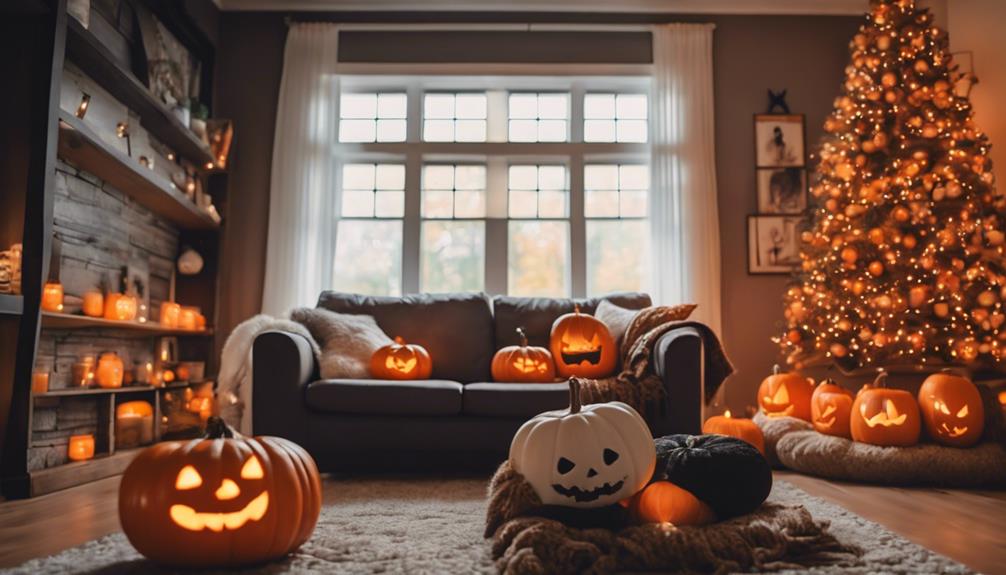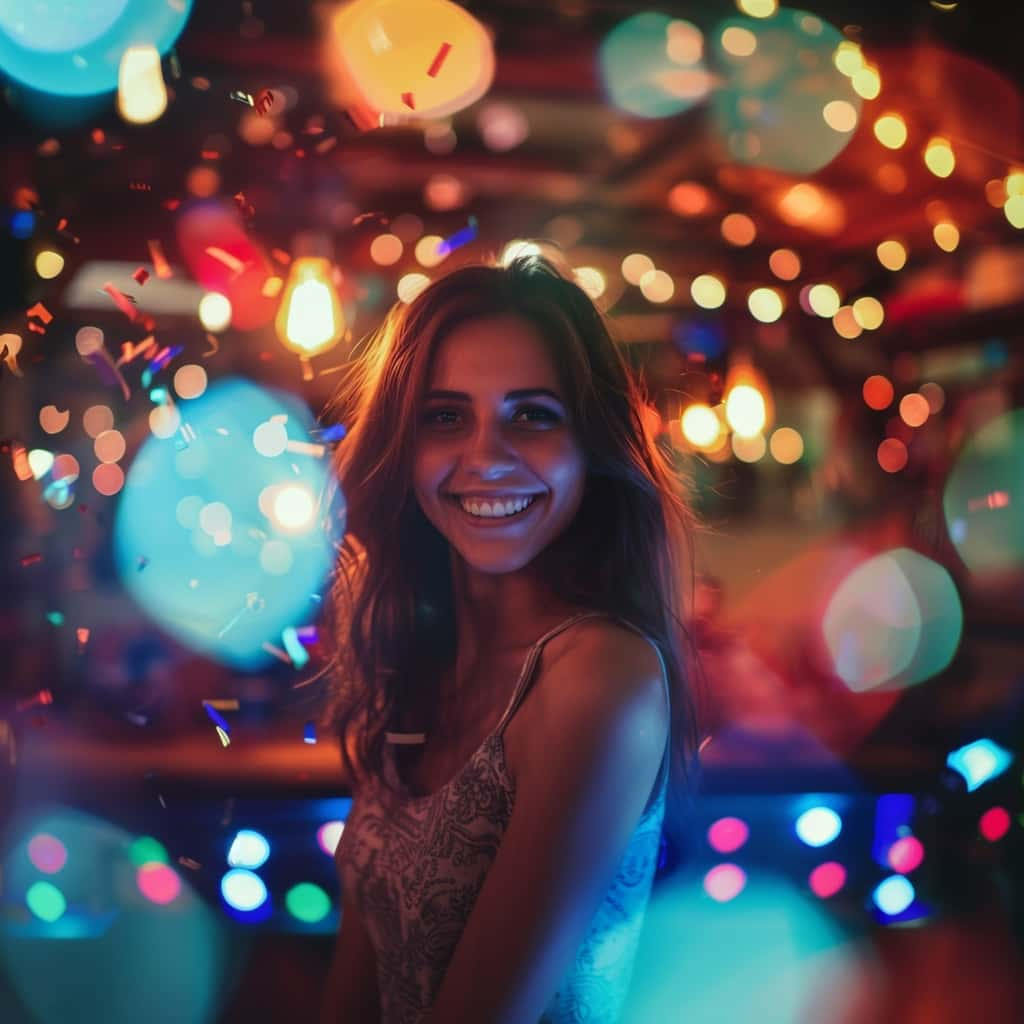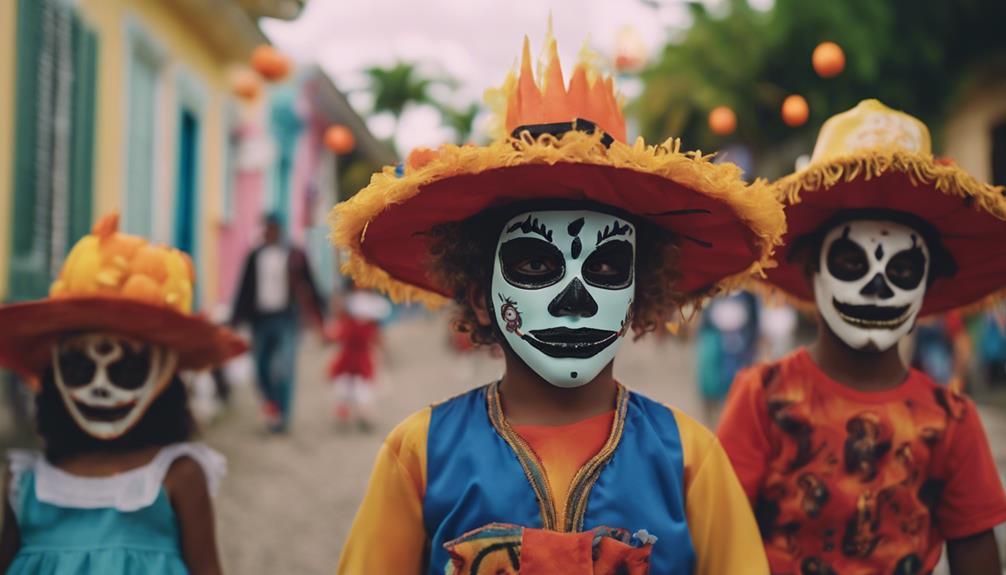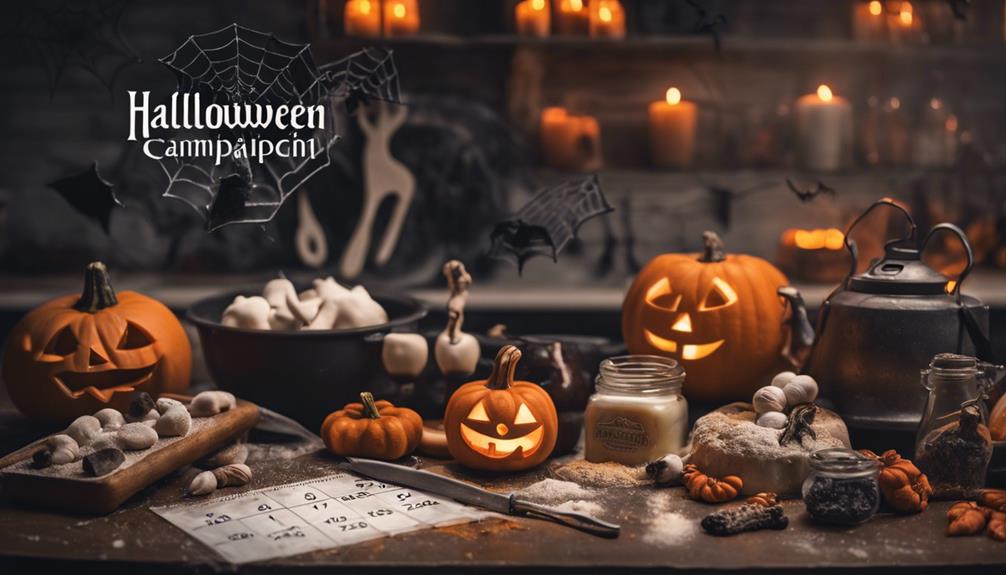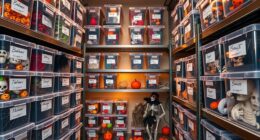Revealing the factors influencing sexualized Halloween costumes highlights societal gender norms dictating appearance, media's portrayal of revealing characters shaping trends, commercial profit driving production of provocative attire, and societal pressure on girls to conform to sexualized norms. Marketing strategies emphasize branding, provocative imagery, target audience appeal, and historical gender expectations. Empowering girls through diverse costume choices challenges traditional stereotypes. Understanding these reasons provides insight into the complexities behind sexualized costumes. Explore further to gain a deeper understanding of the societal, cultural, and commercial influences on Halloween attire.
Key Takeaways
- Societal gender norms contribute to sexualized costume designs.
- Media and pop culture perpetuate revealing costume trends.
- Commercialization drives production of sexualized Halloween attire.
- Peer pressure and societal expectations influence costume choices.
- Brands use provocative imagery and target specific audiences to sell sexualized costumes.
Societal Gender Norms
Societal gender norms pressure girls to prioritize appearance over other qualities, perpetuating harmful stereotypes and limiting costume options. During Halloween, costume designs often reinforce these norms by offering limited choices for young girls and excluding full-figured women. The divide in sizing and styles restricts the representation of confident characters, further entrenching gender stereotypes.
Additionally, the prevalence of sexualized costumes contributes to the perpetuation of harmful stereotypes regarding female desirability in society. By promoting costumes that align with narrow beauty standards, young girls are encouraged to conform to unrealistic ideals. These limited and often sexualized costume options not only restrict creativity but also reinforce harmful stereotypes that can impact self-perception and societal expectations.
It's essential to challenge these norms and advocate for more inclusive and empowering costume choices that break free from traditional gender roles and beauty standards, allowing individuals of all shapes and sizes to express themselves authentically during Halloween.
Influence of Media and Pop Culture

Media and pop culture greatly influence the promotion of sexualized Halloween costumes for women and girls. Mainstream media often portrays female characters in revealing and sexualized costumes, which can have a substantial impact on consumer preferences during the Halloween season.
Pop culture icons and celebrities are frequently seen donning sexy attire, setting trends for costume designs that prioritize sexualization. Additionally, social media platforms play a pivotal role in showcasing influencers and celebrities wearing provocative costumes, further normalizing the sexualization of Halloween attire for women and girls.
The pervasive influence of media and pop culture contributes to the prevalence of sexualized costumes in the market, shaping societal perceptions of what's deemed appropriate or desirable for Halloween. This influence highlights the need for critical examination of the messages being perpetuated through various media channels and the impact they've on costume choices, self-image, and societal norms.
Commercialization of Halloween
The commercialization of Halloween has greatly influenced the availability and design of costumes, particularly emphasizing sexualized options to cater to consumer demands. This focus on profit has led to the production of commercial Halloween costumes that often depict females in revealing dresses, perpetuating the objectification theory. Mainstream costumes, especially those marketed as sexy, promote the idea of a sexualized body and contribute to the reinforcement of narrow beauty standards. The media's depictions of idealized female figures further fuel the demand for costumes that emphasize body exposure. Unfortunately, these trends limit the options available for women and girls who do not fit the traditional mold, excluding them from participating fully in the festive spirit of Halloween. The commercialization of Halloween not only impacts the costume industry but also plays a role in shaping societal perceptions of beauty and desirability.
| Commercial Halloween Costumes | Sexy |
|---|---|
| Female | Revealing Dress |
| Sexualized Body | Objectification Theory |
| Media Depictions | Body Exposure |
| Narrow Beauty Standards | Mainstream Costumes |
Pressure on Girls to Conform
Girls face immense pressure to conform to societal expectations, driven by influences from media and peers alike.
The impact of these pressures on girls' self-esteem and self-image is significant, shaping their choices in Halloween costumes and beyond.
Understanding these influences is vital in empowering girls to express themselves authentically and confidently.
Social Expectations on Girls
Under societal pressures, young girls often find themselves compelled to adhere to sexualized Halloween costumes. Market trends heavily favor revealing costumes for girls, leaving limited options for those who prefer non-sexualized attire.
Social expectations play a significant role in perpetuating the sexualization of girls' Halloween outfits, exposing them to unrealistic beauty standards from a young age. These pressures can make it challenging for girls to feel comfortable in costumes that don't conform to societal norms.
The emphasis on sexualized costumes can lead to girls feeling pressured to prioritize appearance over personal comfort or creativity. As a result, many girls may feel compelled to choose costumes that align with these expectations rather than expressing their individuality.
It's important to recognize and address these social expectations to create a more inclusive and empowering environment for young girls during Halloween and beyond.
Influence of Media
Feeling influenced by media pressure, you might notice a strong push towards conforming to sexualized Halloween costume trends. Media, including advertisements, TV shows, and movies, often portray female characters in revealing and sexualized outfits, impacting the costume choices of girls.
Additionally, social media influencers contribute to the dissemination of unrealistic beauty standards, further promoting the sexualization of girls during Halloween. As a result, girls may feel compelled to emulate their favorite characters or celebrities by selecting revealing costumes that align with these standards.
The constant exposure to sexualized imagery in media plays a significant role in normalizing the idea of wearing revealing costumes during Halloween. This normalization perpetuates the pressure on girls to conform to these unrealistic and often overly revealing costume trends, highlighting the influential role of media in shaping Halloween attire choices.
Peer Pressure Impact
Amidst the social pressures surrounding Halloween costume choices, the influence of peer expectations can greatly impact the decisions young girls make when selecting their outfits. Peer pressure plays a significant role in the normalization of sexualized Halloween costumes among girls. Friends and classmates often exert pressure on girls to conform to societal expectations by wearing revealing outfits. Social media and popular culture further contribute to this trend, pushing young girls to prioritize appearance over personal comfort and preferences.
The fear of standing out or being judged by peers can lead girls to choose sexualized costumes against their own wishes. The desire to fit in and be accepted within their social circles can override their individual choices. This pressure to conform to what's considered trendy or popular during Halloween can result in girls feeling compelled to dress in a manner that may not align with their true desires. It's important to recognize the impact of peer pressure on young girls and encourage them to make choices that reflect their comfort and individuality rather than succumbing to external influences.
Marketing Strategies
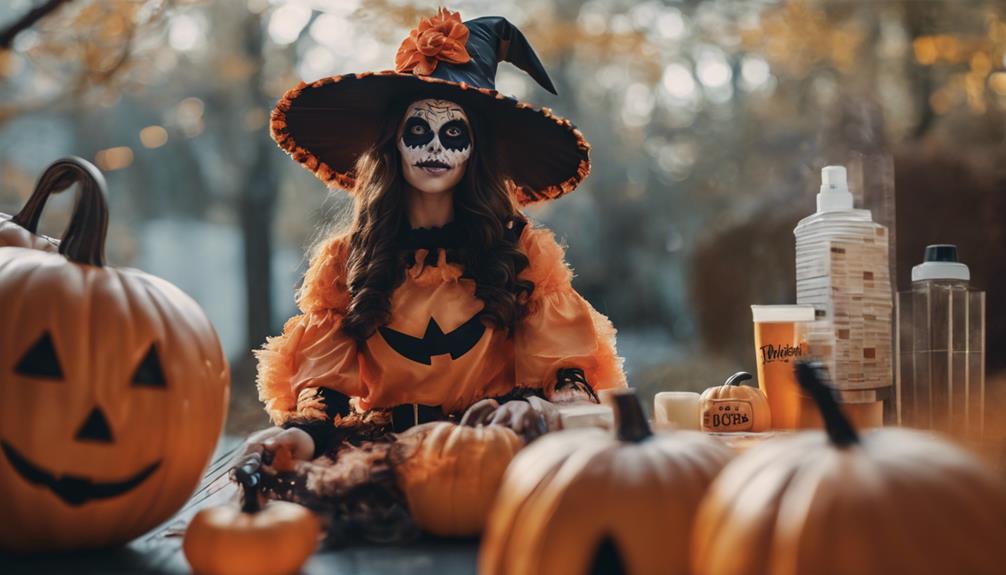
Marketing strategies play an essential role in the proliferation of sexualized Halloween costumes. Brands use specific imagery and target audience appeal to market provocative costumes, particularly to women and girls.
This approach contributes to the normalization of sexualization in costume designs, impacting consumer choices and societal expectations.
Branding and Imagery
Strategically utilizing branding and imagery, retailers market sexualized Halloween costumes to appeal to consumers' desires for provocative attire.
To understand how branding and imagery contribute to the promotion of sexualized costumes, consider the following points:
- Branding: Retailers use branding to create a distinct identity for their sexualized costumes, making them stand out in the market.
- Imagery: Provocative imagery in advertisements is employed to catch the attention of consumers and entice them to explore the costumes further.
- Highlighting Sexualized Features: Marketing strategies often focus on emphasizing the sexualized aspects of the costumes to attract buyers looking for bold and alluring outfits.
- Reinforcing Themes: Imagery in advertisements plays an essential role in reinforcing the sexualized themes of the costumes, creating a strong visual impact on potential consumers.
Through a combination of branding and imagery, retailers effectively market sexualized Halloween costumes, tapping into consumers' preferences for daring and seductive attire.
Target Audience Appeal
To maximize profits in the Halloween costume industry valued at $8 billion annually, retailers strategically target women with sexualized Halloween costumes designed to appeal to societal norms and expectations. The marketing strategies in this profit-driven industry focus on creating revealing dresses for women, perpetuating the sexual objectification often associated with women's Halloween costumes.
Costume offerings for women often include sexy costumes with emphasis on revealing attire, reflecting the societal pressures and demand for such outfits. Retailers capitalize on this target audience by promoting and designing costumes that align with societal norms of what's considered attractive or desirable, particularly for Halloween celebrations.
The prevalence of sexualized cues in women's costume offerings compared to men's highlights the specific targeting of women in this market. By understanding and catering to the expectations and desires of their target audience, retailers aim to increase sales and revenue during the Halloween season.
Historical Gender Expectations
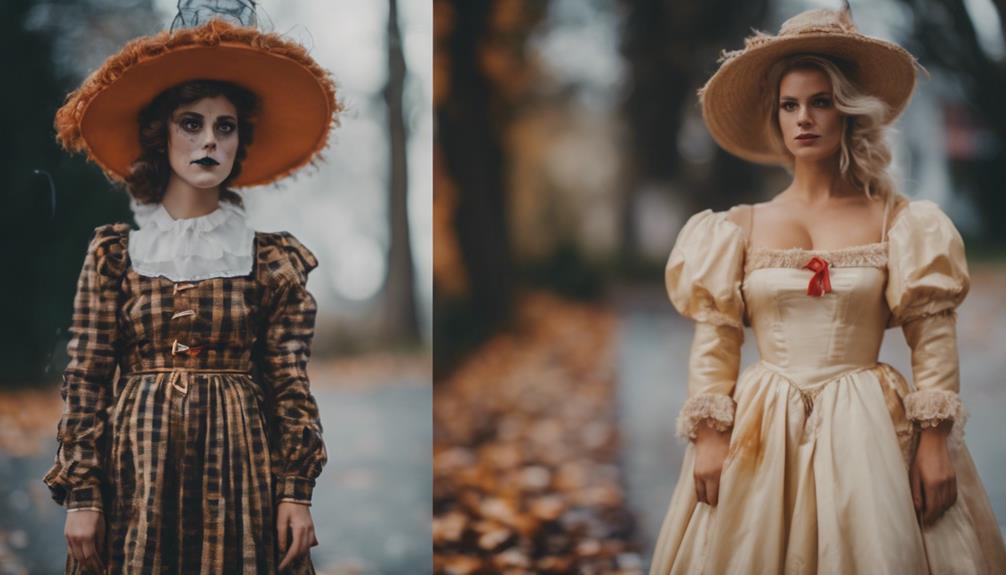
Historical gender expectations have greatly influenced the development and presentation of Halloween costumes over the years. These expectations have shaped the way men and women are portrayed in costume options, reflecting traditional gender roles and stereotypes. Here are four key ways in which historical gender expectations have impacted Halloween costumes:
- Costume Styles: Expectations of femininity and masculinity have guided the design of different costume styles for each gender.
- Sexualization: Gendered stereotypes have played a significant role in determining the level of sexualization in Halloween costume choices.
- Historical Context: The historical context has influenced the extent of sexualization in costumes for both men and women, reflecting societal norms of the time.
- Portrayal: Traditional gender roles have influenced how men and women are portrayed in Halloween costumes, perpetuating gender expectations and stereotypes.
These factors have collectively contributed to the evolution of Halloween costumes and the way gender is represented in costume choices.
Empowering Girls in Costume Choices
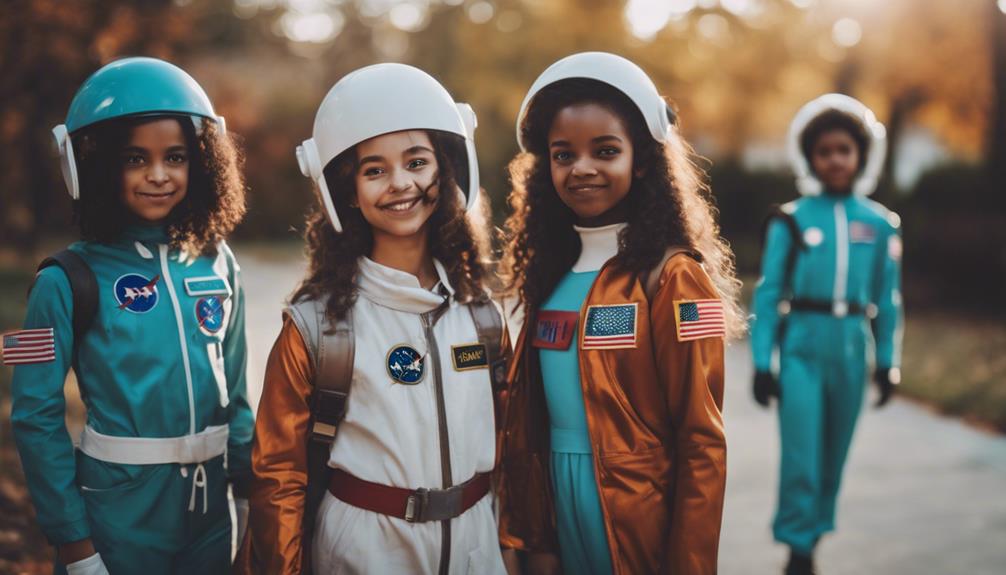
Girls are increasingly gravitating towards costumes that embody empowerment and strength, such as Iron Man and Ghostbusters characters. This shift reflects a desire for more diverse options that go beyond traditional princess or fairy costumes. By embracing empowering costumes, girls can showcase their creativity and self-expression in new ways. Limited choices in the past may have hindered these opportunities for girls to explore different roles through their costume choices.
Encouraging girls to opt for empowering costumes not only empowers them individually but also contributes to shifting societal norms and challenging stereotypes. By offering a wider range of costume options, stores are adapting to meet this demand and support girls in making independent decisions about their Halloween attire. This empowerment in costume choices can foster a sense of independence and enhance girls' decision-making skills. It opens up a world of possibilities for girls to express themselves authentically and confidently during Halloween and beyond.
Recognition of Harmful Effects
Shifting the focus from empowering costume choices to recognizing the harmful effects of sexualized Halloween costumes reveals critical insights into societal influences on girls' perceptions and behaviors. When it comes to women's Halloween costumes, the impact of revealing dress goes beyond just a night of fun. Here are some key points to contemplate:
- Sexual Objectification: Women often face pressure to wear revealing costumes, perpetuating the objectification of females.
- Beauty Standards: Sexualized costumes can reinforce harmful beauty standards, emphasizing appearance over other qualities.
- Self-Esteem: Research suggests that prioritizing appearance in costume choices can negatively impact girls' self-esteem and self-worth.
- Gender Stereotypes: The prevalence of sexualized Halloween costumes can limit girls' opportunities for creative choices, reinforcing traditional gender stereotypes.
Recognizing the harmful effects of sexualized Halloween costumes is vital in understanding the psychological impact these choices can have on girls' development. The commercialization of Halloween further adds to the expectation for females to dress provocatively, emphasizing the need to address harmful trends in costume selections.
Frequently Asked Questions
Why Are Halloween Costumes so Revealing?
Halloween costumes are often revealing because of societal beauty standards and profit motives. Designers create sexy outfits to meet societal expectations, prioritizing profit over inclusivity.
The commercialization of Halloween drives the demand for provocative designs. Unfortunately, this trend negatively impacts young girls by perpetuating harmful messages about appearance. Limited sizes and styles in sexy costumes exclude many individuals.
This emphasis on revealing costumes reflects a narrow view of beauty and desirability.
What Is the Meaning of Revealing Costumes?
Revealing costumes often feature tightness, cutaways, and emphasize sexualized body parts. They convey a message of sexual objectification and focus on physical appearance.
Wearing such costumes can lead to judgment and perpetuate stereotypes about attractiveness. Research shows a link between revealing dress in media and negative consequences.
The revealing nature of these costumes can contribute to the objectification and sexualization of individuals, impacting how they're perceived and treated.
What Is the Historical Reasoning for Dressing up in Costumes for Halloween?
When considering the historical reasoning for dressing up in costumes for Halloween, it all began with a Celtic festival called Samhain. People wore costumes to ward off evil spirits during this ancient festival.
Over time, this tradition evolved into a playful way to express creativity and imagination. From simple homemade outfits reflecting folklore characters to today's commercialized costumes, the essence of Halloween dressing up has transformed but remains rooted in tradition and fun.
What Is the Story Behind Why People Dress up for Halloween?
When people dress up for Halloween, it's a chance to have fun, show creativity, and take on different personas. Costumes can be spooky, funny, or even sexy, reflecting popular culture or personal interests. It's a way to celebrate and socialize at parties and events.
Conclusion
To sum up, the reasons behind sexualized Halloween costumes can be attributed to societal gender norms, media influence, and commercialization.
One interesting statistic reveals that 80% of young girls feel pressured to dress in a sexualized manner for Halloween.
By recognizing these harmful effects and empowering girls to make their own costume choices, we can work towards creating a more inclusive and empowering environment for all.

